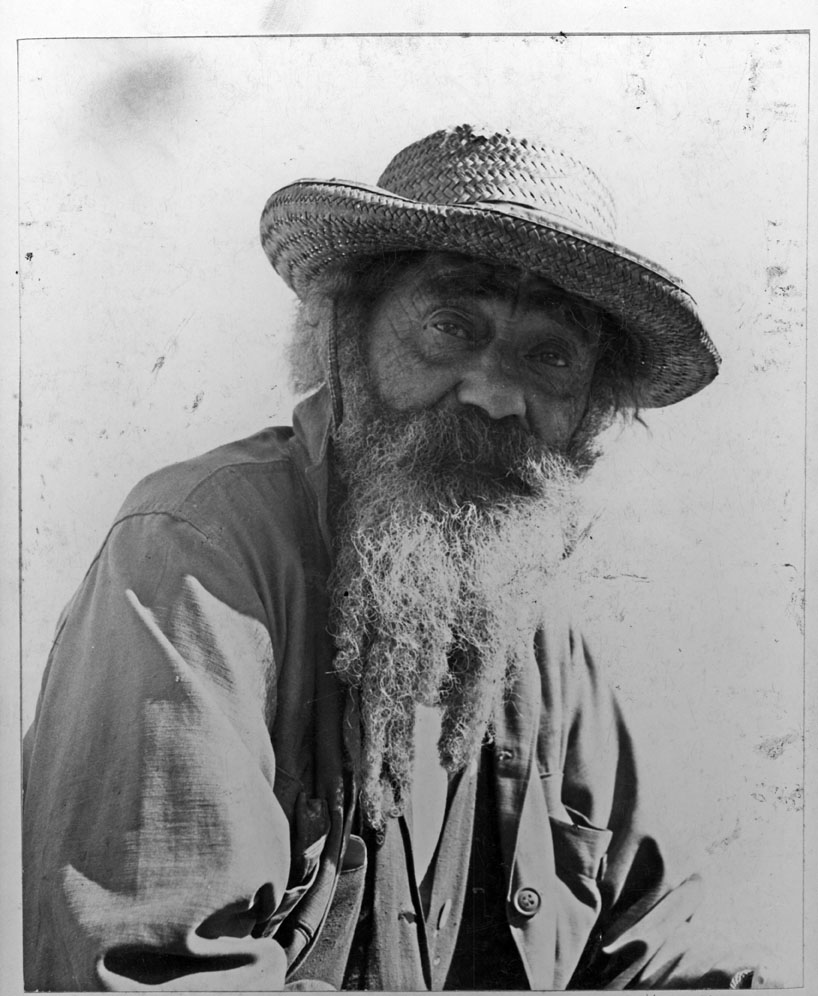 |
One
act of passion I found him walking around Belle Glade, located on the fertile muckland apron on Lake Okeechobee, where grew the nation's winter vegetables and tons of sugar cane. It was my beat, and he was a character who looked like a story. As a young reporter, I took many pictures for myself and for the newspaper. Several of them were of this man, who went to Fort Leavenworth Federal Penitentiary for shooting a fellow cadet at West Point, sometime perhaps around 1920. It was over a woman, I was told. He would sit in a chair across the street from the small newspaper bureau office. Here was a man who might have become one of the famous generals of World War II, a colleague of Eisenhower, perhaps, planning great strategies in the western front. For a single act of passion, his career was ended. I called the prison, and they looked him up. "Is he still around?" came the response. I do not remember where he came from, but it seems he was a son of the South. |
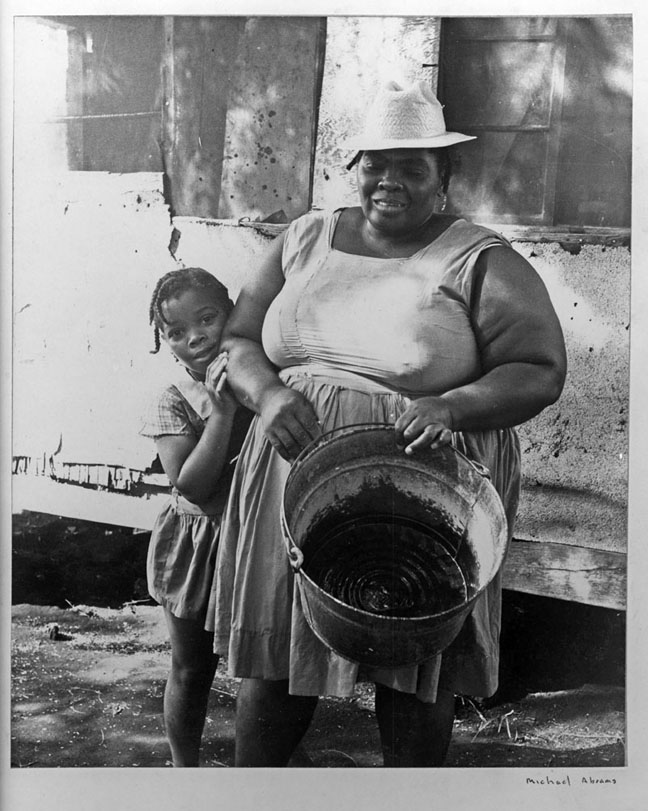 |
A child's love The lady was known as "Mrs. Tiny." Many people in places such as South Bay or Bean City lived on the bare necessities. Those who became residents the year around often had to seek help from the government. As a reporter, I wrote a lot about the misery of their lives, and got flack from a lot of people tired of hearing about it. Housing was often in disrepair, and one essential was a good screen to keep the insects out. Many residents did not have full employment in all seasons, and relied on the welfare system. There was no unemployment compensation for them. Welfare meant going to a dispensary where you could get peanut butter, rice, flour, and other limited staples. Material goods were nice to have, but the basis for anything worthwhile is found in the intrinsics of human relationships, and this was as true for the son or daughter of the land-rich grower as it was for the children of those who had learned to live with much less. |
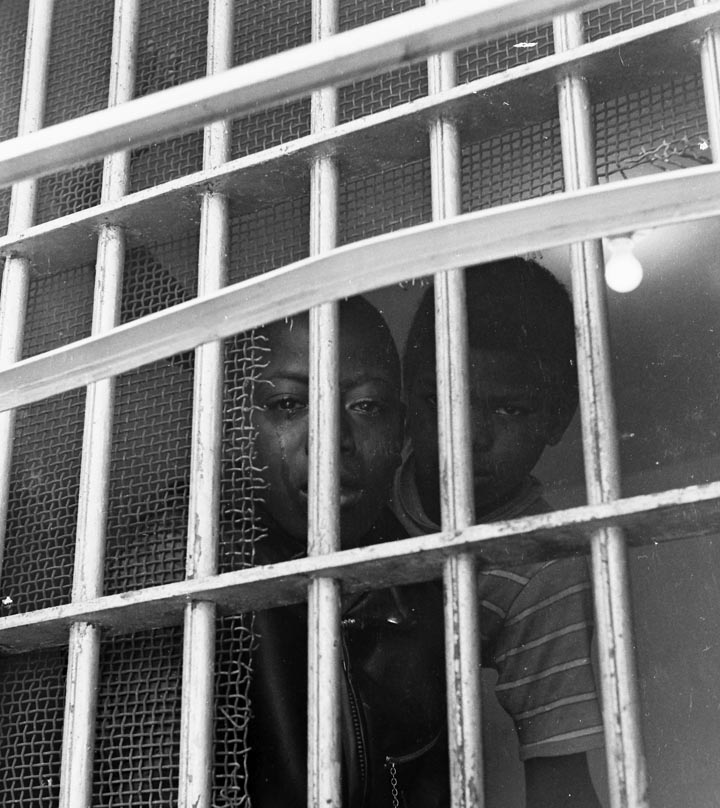 |
Youngsters in the city jail I was told these kids were in city jail until the police could find their parents. They had been accused of stealing gumballs or a similar activity involving a vending machine. I thought that there must be a better place to keep children accused of crime. One can only guess at the psychological effects of putting children in jail, and how this experience might have played out over time. I was able to talk to them through this window. Belle Glade wasn't the most progressive city in law enforcement, and one wonders how much money was actually spent to upgrade facilities, given the torn screen here. Once there was a commotion at the jail as someone tossed a wildcat through the door as a joke. The cities in Florida had their own municipal courts at that time. Labor was recruited from the jail and may have been used on city projects. I don't know if prisoners were made to work on private farms, but it wouldn't have surprised me. |
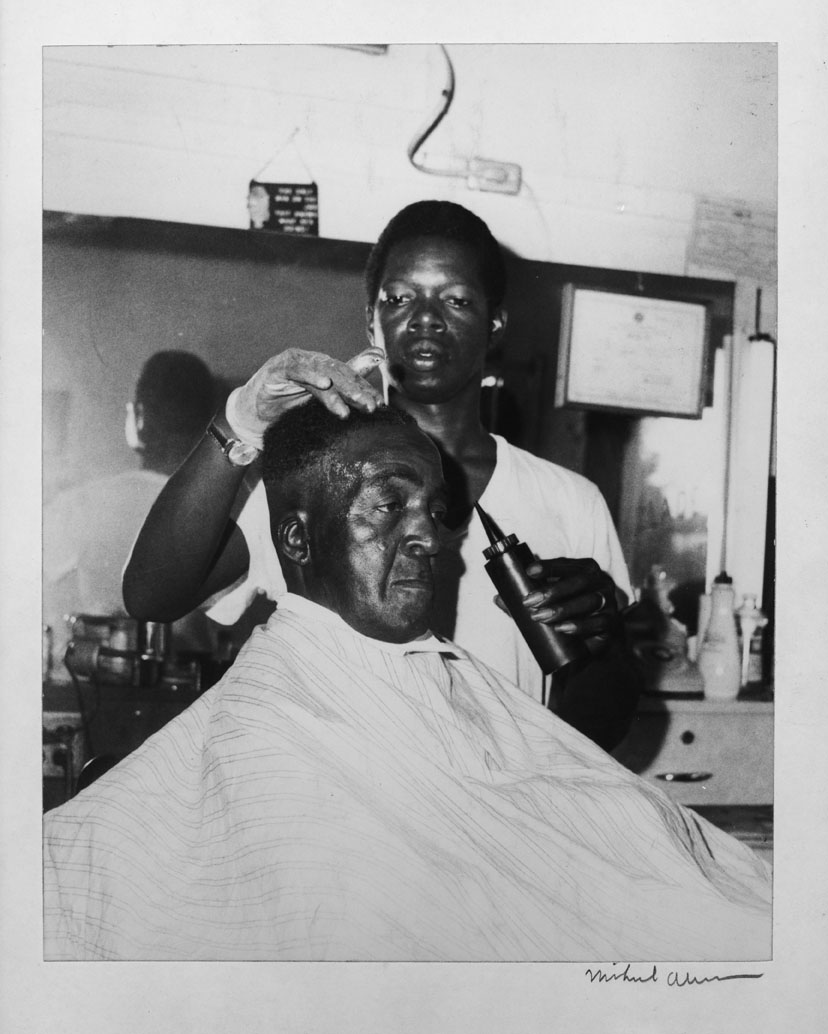 |
Barbershop Blues Seated at one of the chairs in the barbershop in Pahokee was a middle - aged gentleman who was getting some kind of a chemical or dye treatment on a receding hairline.There was an implicit trust here. As I have grown to be someone who is going to lose most of his hair, I am aware that sometimes the ritual of a barbershop serves many purposes. Ralph Ellison wrote "there is more unselfconscious affirmation to be found there on a Saturday than you can find in a Negro college in a month." This was not only a way to make some of the gray hair disappear. The customer was getting his hair "blued." Now this was nothing like modern times where young people think nothing of dying their hair "blue." What this treatment did, apparently, was give a natural glow to his hair. No one should underestimate the importance of the barbershop to black history, and its continuing importance in black society. |
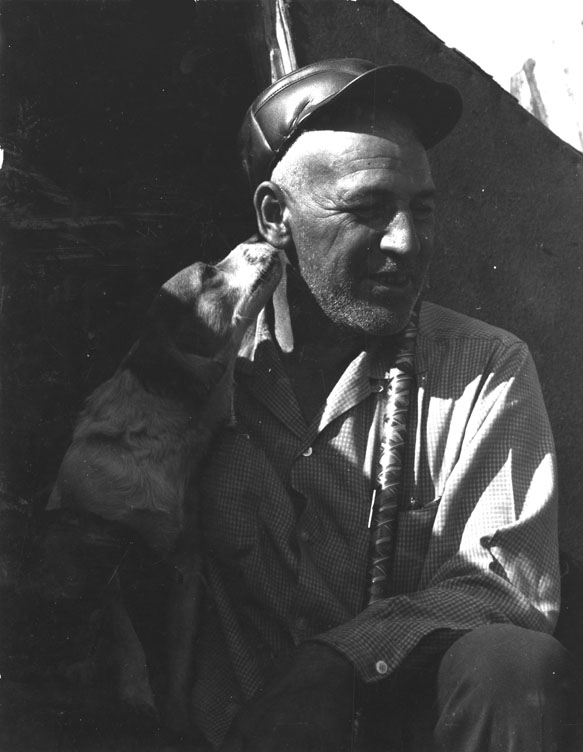 |
My friend Sherman Payne An itinerant mechanic, he lived in a junked car with his dogs. He had been jailed in Moore Haven and his tools were stolen. I wrote about him. He called me "Mike Hammer." He knew cars, and had fixed up an automatic Chevy so that the transmission could be switched with a stick. On a holiday, he wrapped a pipe in ribbons and could play a tune on it. He learned how to do this growing up in the mountains of Appalachia. He was a veteran and he was hurting a lot. The Rural Legal Services lawyers were trying to help him, too. One Christmas eve, we decided to drive to Miami to the big Veterans' Hospital to get him some help for his back. He needed hospitalization. I thought Christmas was a time when people are more charitable. But when we got down there they told us there was not one bed available in the hospital. From that point on, I had a jaundiced view of the VA. They did give him a huge jar of aspirin and sent us on our way. I don't know if Sherman ever got what he needed in the way of medical care. What I do know is that when I left Belle Glade after a year, I left a good friend there. |
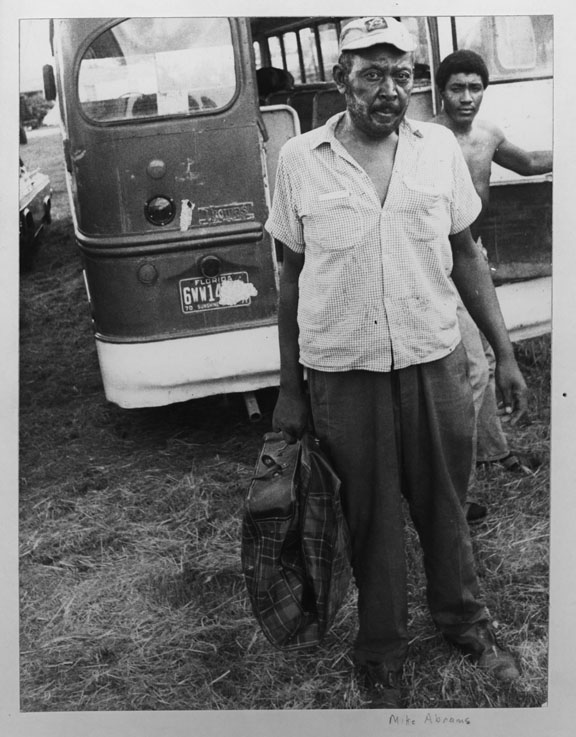 |
Off the Migrant Bus Migrant labor depended upon the bus. Crew were picked in the early mornings before light in Belle Glade, with people warming their hands over fires in steel barrels. It was cold. Crews also were bused in from other cities or states, and housed on rows of farm shacks. Migrant housing was notorious. At work, pesticides in the fields caused illness. Children of migrants did not stay at one school, and programs were instituted to track them. Crew leaders competed to bring these men, women and children to the fields. While some crew leaders who were concerned about the welfare of those they carried, the abuses were many. Buses were often unsafe. An entire busload of migrants went off the road once on narrow State Road 80 drowning all. It was not unknown for the crewleader to stop the bus at the liquor store. If there is a synonym for powerlessness, it is in the words 'migrant worker.' Elisha Baines, a businessman in Pahokee, would compare them to little birds who come in without food or a place to stay. Good people, black and white, tried to solve some of the problems. Today's migrant stream is Mexican and Latin American. |
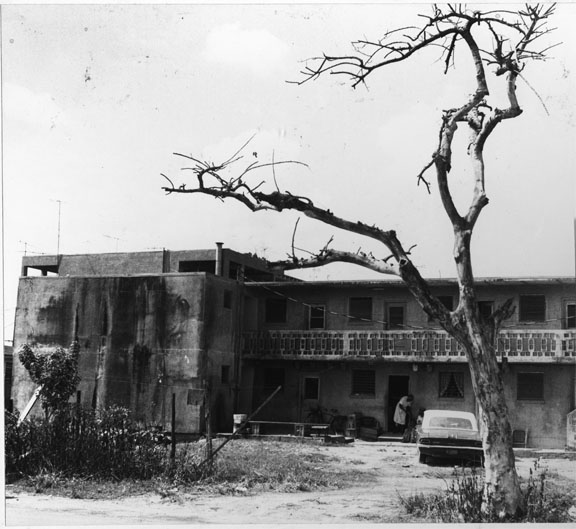 |
Third world in Belle Glade Some of the streets in black neighborhoods seemed to be directly out of the third world. Could you live here? Would you like to grow up here? Is this the United States? Let us hope that in 40 years, this sort of housing has been torn down and people no longer have to live in it. There were many people of conscience in Belle Glade, but progress was a long time coming. Some in the white community would tell me "that's just the way n** like to live, they tear up everything." Perhaps, as one country editor told me, "you have a lot to learn." What I did learn was that newspapers were not going to change the world, when people who run communities don't want to change. You can take a worm's eyeview of your community, or you can see it from a higher precipice and seek change for humanity's sake. |
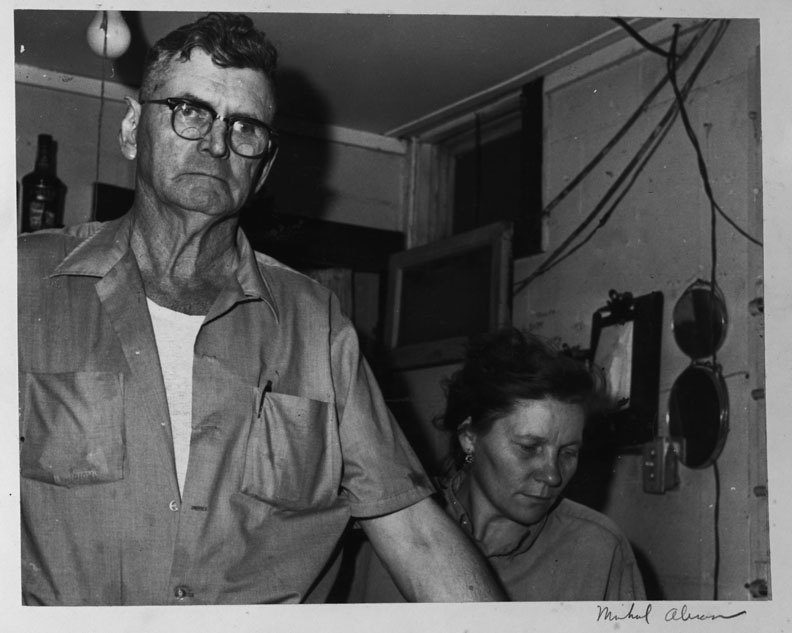 |
Trouble in South Bay There had been some kind of racial incident in South Bay. I drove over to the small town on U.S. 27. There were lots of deputies and I was ordered out of the area by police, but was able, at some point, to take pictures of the owner or manager of a small package store in the middle of town. I think it's probable that he wasn't feeling good about whatever was going on. Making a living in these towns was not easy for people, black or white. Some of them originally came in association with agriculture, mostly from the Southern states. South Bay was a place that most truckers knew about, as it was a place to refuel before the long trek to Miami down dangerous U.S. 27. |
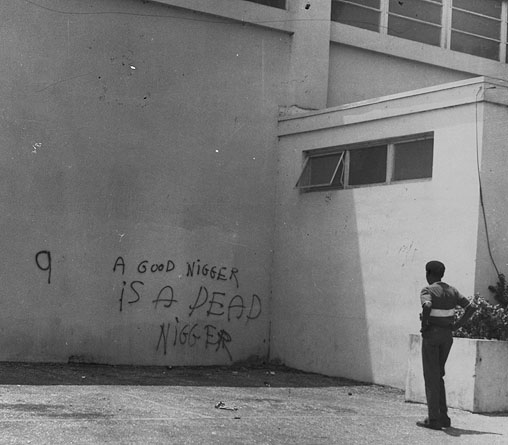 |
Racial Hatred This was written on the wall of a school in Pahokee where there had been racial tensions. I was not allowed, as a reporter, to go on the grounds and speak to people, but I was able to take this picture. The battle for civil rights often resulted in violence during the 60s and 70s. The War in Vietnam split the country at the same time. It was a time of great tumult. The Glades areas faced true racial integration in schools for the first time. Race hatred was at an all-time high. Even in the year 2008, it simmers beneath the surface of modern society. The Southern Poverty Law Center keeps track of much of the more vociferous racist groups. |
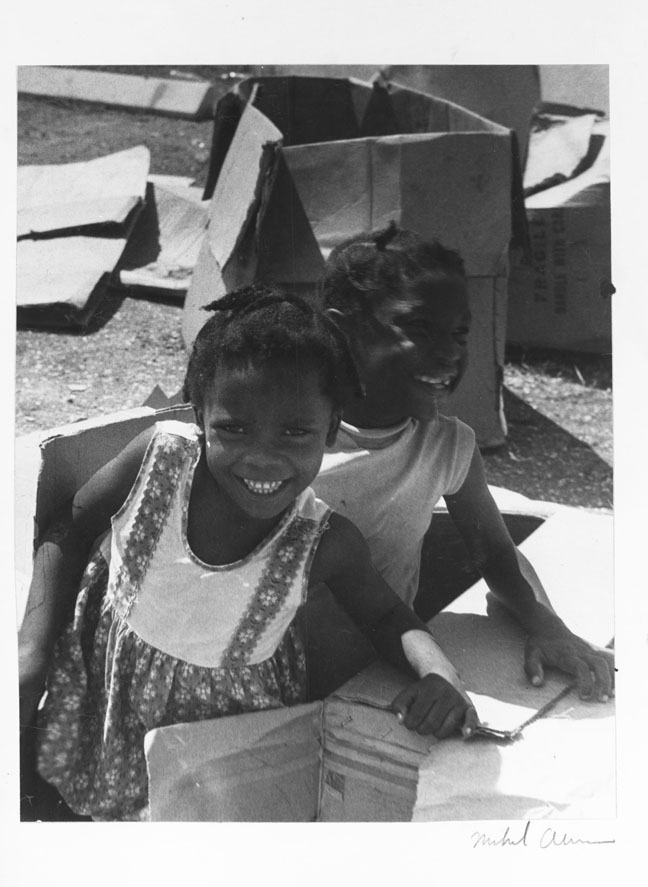 |
In and Out of the Boxes As a reporter, I was always on the lookout for good pictures, that being one of the conventions of journalism in the 1970s. Newspapers at that time would send photographers out for a day or two just to collect what was called "wild art." As bureau chief in a small town, I had to take pictures and ship the negatives by Greyhound bus to West Palm Beach. I used an old Yashica twin lens reflex model "D." Everything was grist for the journalistic mill. Having a large box to play in was one of the joys of childhood for me, and when I saw these kids and the boxes, I knew they were having a blast. You can not only hide in a box, but you can roll around in a box and a box can become a fortress strong. Imagination is the key. I'm not sure how many other toys these kids had, but that didn't prevent them from having some fun. These children must be middle - aged by now, and I wonder where they are and what they are doing. |
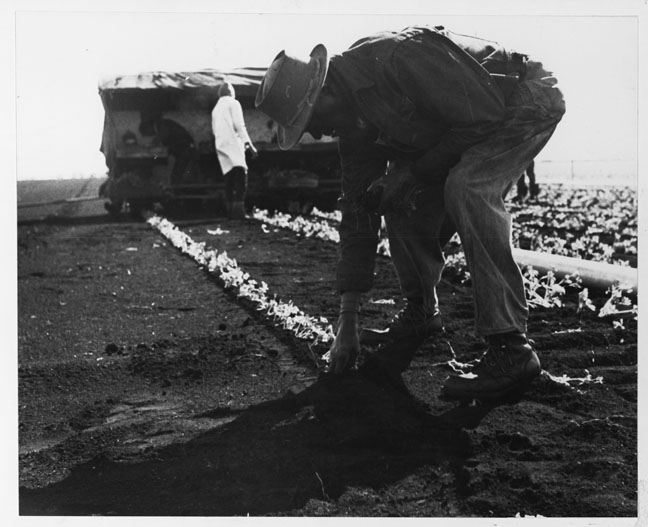 |
Stoop labor in the fields The wear and tear of repetitive motion was once a part of the life of everyone who farmed. For workers in the field, it can be back-breaking work if done all day. The sheer wealth of vegetables and fruit we see at the grocery stores belies the amount of hard labor that goes into the planting, fertilization and harvesting of it. Much of the work is done by individuals who are members of society's underclass and for whom life doesn't offer many opportunities. Migrant workers and other field workers have only just begun to acquire the kinds of benefits we take for granted - unemployment insurance, medical care, decent housing, and wages that reflect the importance of what they do for all of us. |
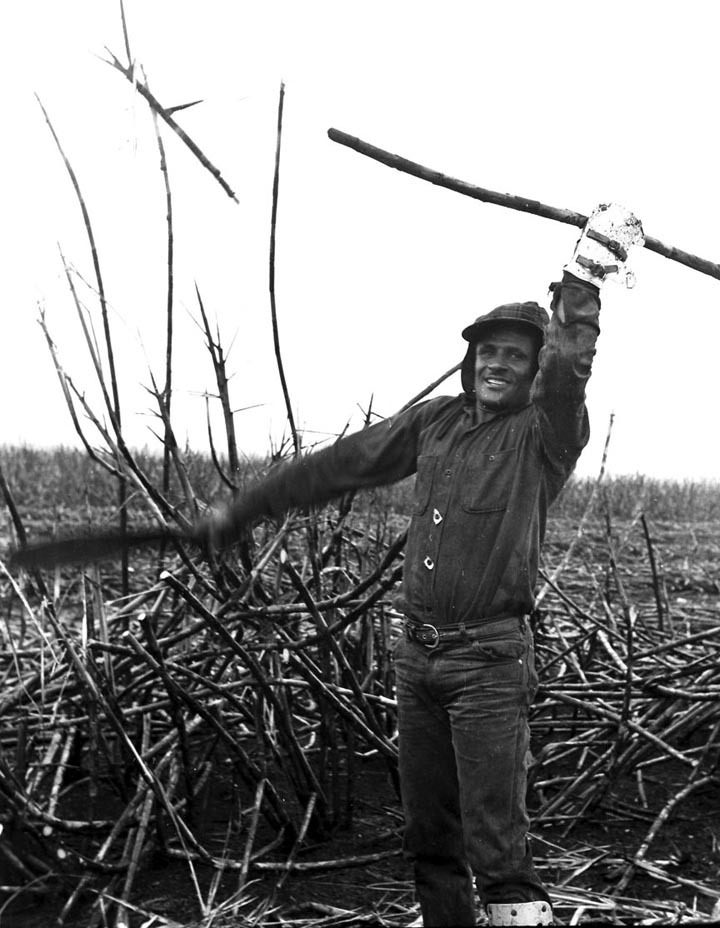 |
Jamaicans cut the sugar cane They used machetes and had to wear protective armored clothing to prevent accidents. They came to cut after the fields were burned. The sickly-sweet smell of the burning sugar cane fields was nauseating as it spread over Palm Beach County, but residents got used to it, as it was their bread and butter. The Jamaicans were housed in dorms by the sugar companies. These were off - limit to reporters. It was said that local labor didn't want to work the cane fields, so the sugar operators got permission from the federal government to import these foreign workers. Now, it is all done by machine. 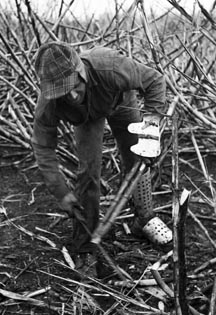 |
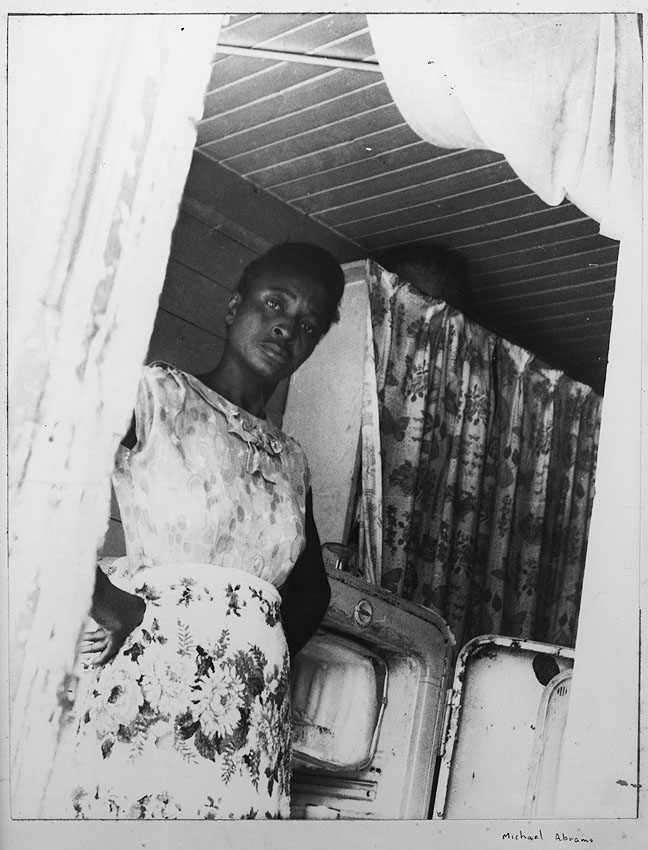 |
Nothing to eat When people weren't working and there was not enough food to tide them over for the next harvest, something was terribly wrong. This happened in Okeechobee, a city at the north end of the lake. In a land of plenty, how did something like this happen? When workers live hand to mouth, there isn't much room to negotiate. Emergency supplies were finally brought into Okeechobee County to help alleviate what threatened to be a crisis that one hears about in third world countries. There was so much irony in that hunger can exist in the richest country on earth, and those who harvest our food were unable, themselves, to have enough food for their tables. It was easy in the 1970s to blame the victims themselves. "They just don't want to work" or "they're too lazy to get a job." This is the sort of refrain one heard over and over in western Palm Beach and nearby counties. Social conscience had to be imported to these communities who failed to take care of their own. |
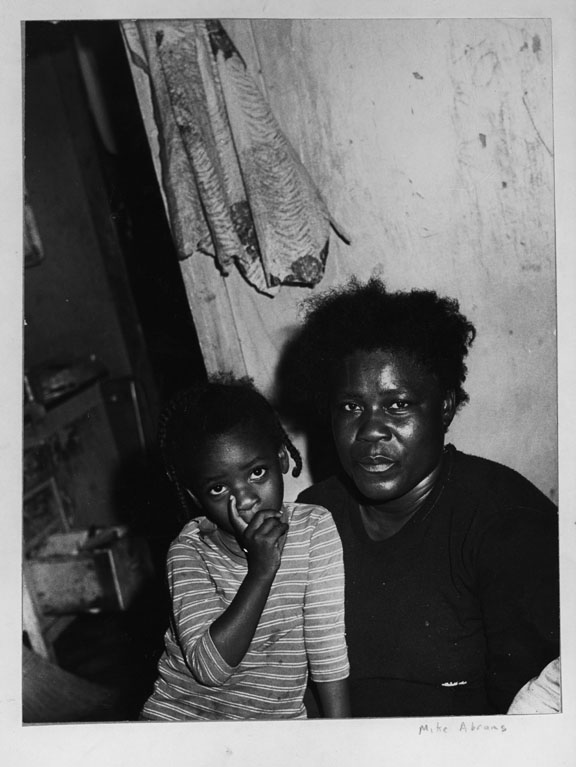 |
Tell me who Who are you? Do you live in America? Do you have a dream? ca. 1970 |
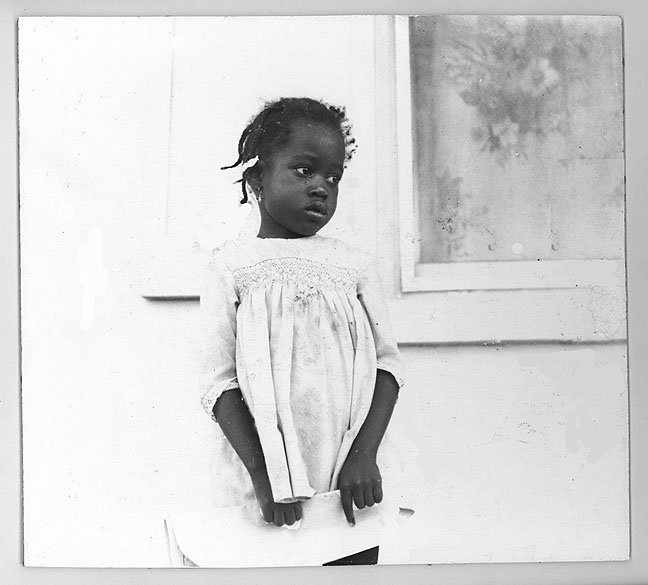 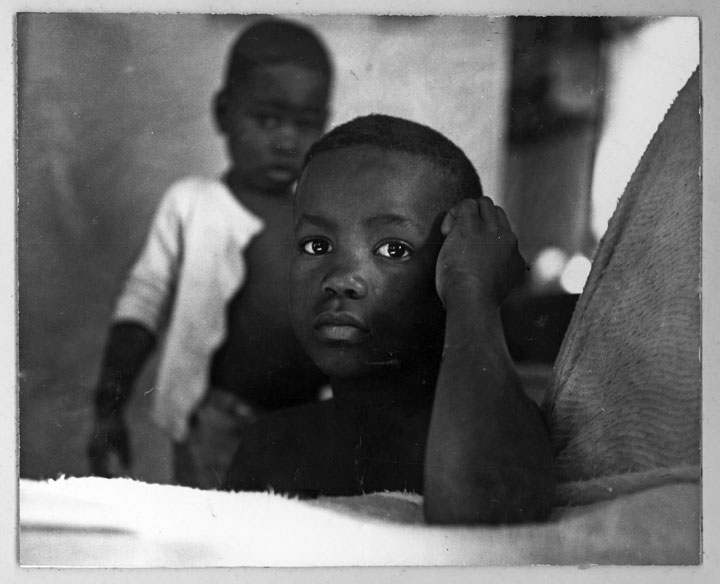 |
Tragedy at the sugar house In what was a tragedy for all, the father of these children was killed in a sugar factory by a sheriff's deputy after it was reported that he started shouting verses from the Bible and swinging his shovel at people. The question of how and why one person might have acted this way remained a mystery. The story, itself, appeared in the newspaper along with at least one of these pictures. I have wondered how I would have covered this story differently had I the time - and knowledge of human behavior that accumulates with age. I am certain that I did get some quotes from the sheriff's department, but I am wondering if there wasn't a further story about the difficult decision to fire a gun, and more information from fellow workers at the sugar house. At times like these, people just don't want to talk, or are afraid of the press. No one who has ever tried to be a newspaper reporter is unaware that he or she is not welcome at all times, and information is not always forthcoming. People are afraid of losing their jobs on all sides of issues. It is very rare that a reporter will ever be able to talk directly to law enforcment officers who make the decision to shoot. The articles reflect the best we can do under the strain of deadline. The tragedy lives with everyone involved. |
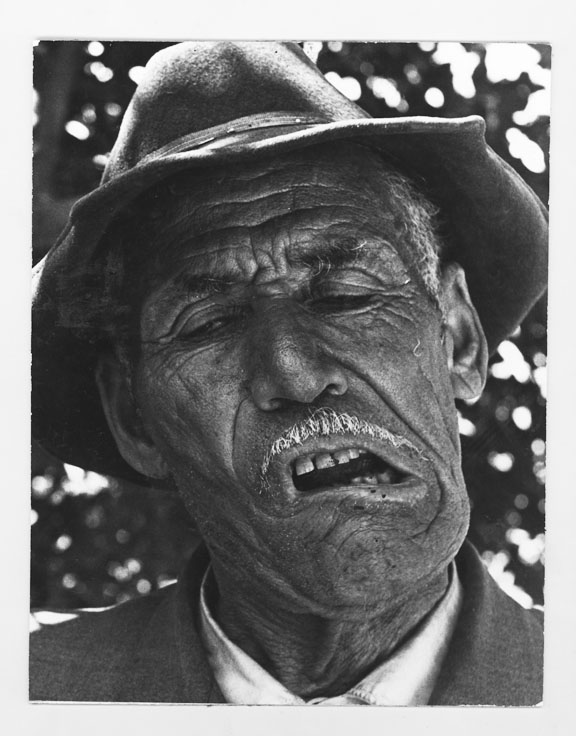 |
Man with a whip This is the expression of a man cracking a whip. Once a mule driver for the U.S. Sugar Corporation, he was showing his craft. Sugar is a dominant industry in the counties around Lake Okeechobee. The large companies used to bring in Jamaican sugar cane cutters and put them up in dormitories for the season, where they could earn up to $4000. Downtwn Belle Glade in the evenings had a strange combination of Arab-owned shops selling watches, cameras, luggage and other items and Jamaican customers. Industry always had excuses not to hire residents for the onerous cane cutting chores. Among them were that the jobs were too difficult and demanding. The use of Jamaican cane cutters has ended as industry figured out how to replace them with machines which cost $165,000 each. |
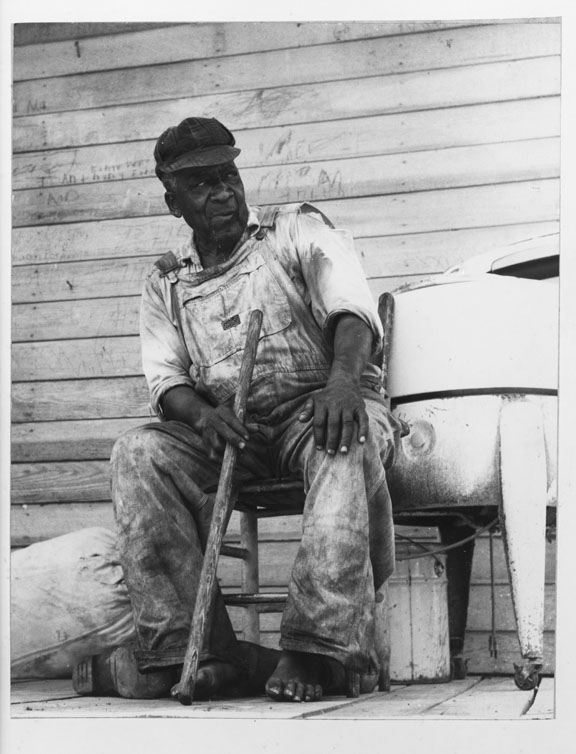 |
Hard work Somehow this picture seems to draw up the image of a lifetime of hard work and some needed relaxation, boots off. The old electric wringer washing machine on the front porch was once a symbol of status and represents the fruits of labor. Those grimy overalls testify that here's someone who isn't reluctant to put all he can into a job. This picture was taken almost 40 years ago, and represents a generation of workers who were essential to the success of the 'winter vegetable capital of America.' |
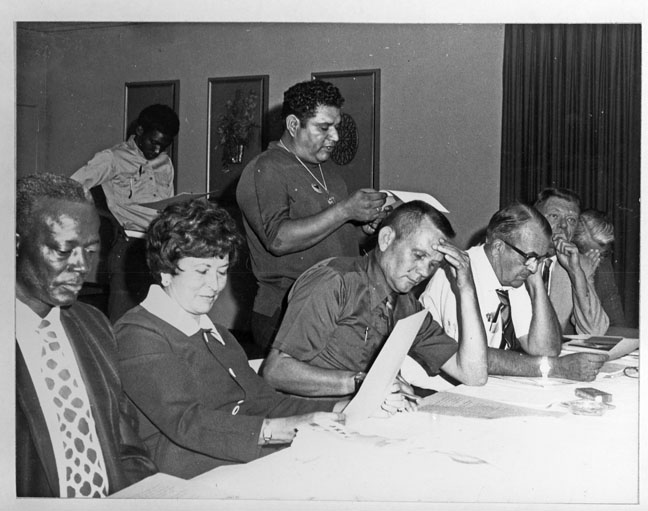 |
Seeking help A few organizations existed to try to help the migrants. Here Rudy Juarez, associated with national Hispanic migrant movement, addresses a group of such people. In the far back is a representative of COBY or "Cry of Black Youth." This organization knew how to provoke the Belle Glade city commission. When it complained of unequal justice, one commissioner replied that the best way to resolve that was to "stay out of the pokey." Mr. Baines of Pahokee, an outspoken advocate, is at the left. These organizations had limited funding, but their boards were made up of people who wanted to find some way of helping. |
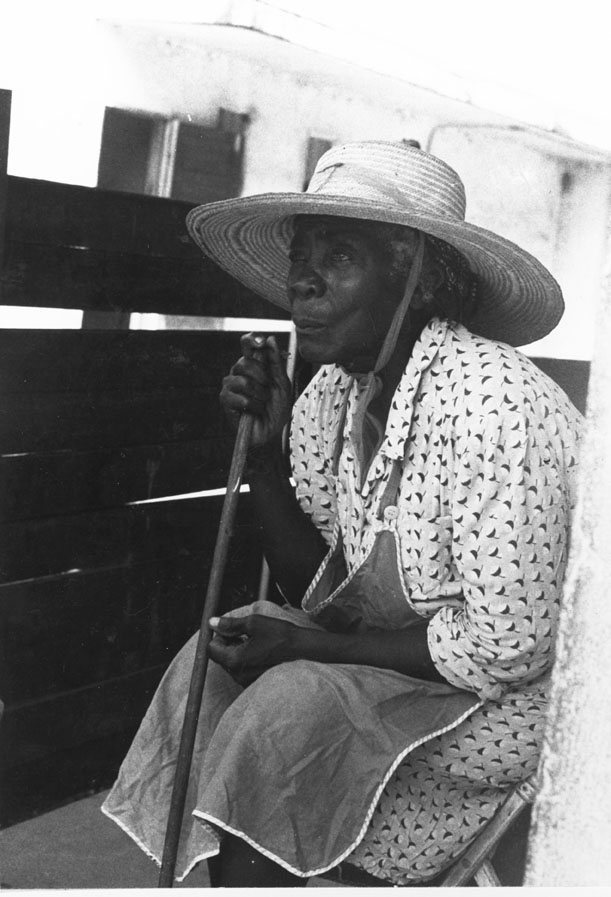 |
Waiting for the 'Jew' rent man The day the rent man came to collect was an important demarcation in the lives of people in the Glades. The rent man might drive up in a fancy car. He might be white or black, but his investment in 'property' was not much of an exercise in human relationships. He came for the money. For the first time in my life I met up with what I thought was black anti-semitism, for, the lady told me, she was waiting for her "Jew" rent man. Knowing that there were very few Jews in the Belle Glade area, it was confusing to me to hear her say that. Most of the Jews who lived there had jobs related to retail stores or to agriculture, and my future father-in-law was a medical technologist at the hospital. Few Jews, if any, actually settled in the farming communities, although I knew of one New York taxi driver who had established a celery empire, sold out or crashed, and spent his days driving around aimlessly in Palm Beach County. So all of this was a puzzle to me. The relationship between blacks and Jews has never been as good as it could be. I was asked by a fellow reporter for a competing newspaper "What's a nice Jewish boy like you doing out here?" He called himself a "Hebe" and wrote for the staid evening newspaper. Two Jews with very different outlooks on the society. |
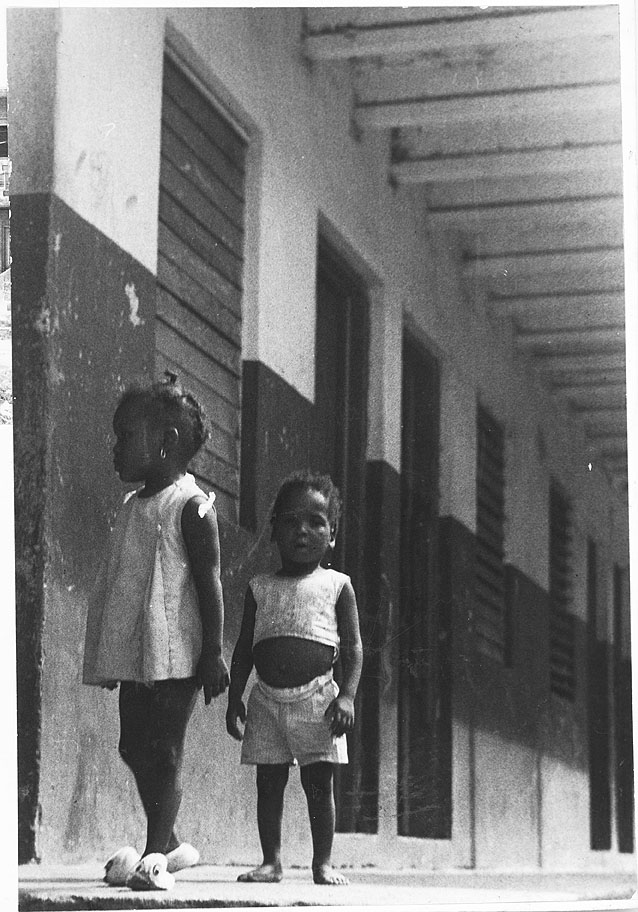 |
A different kind of place, a different time Coming from a middle-class upbringing in Miami, it was difficult for me to understand why there was so much poverty and so much prejudice in the world. I was told that I had to understand that "the n** are different than you and me." When one looked at the conditions of life, it seemed to me that there was an unequal start from the beginning, and to dig one's way out of the poverty would take a superhuman effort. The media, ever since "Harvest of Shame" on CBS with Edward R. Murrow, were looked upon as the enemy by most of the people who lived in Belle Glade, Pahokee or Clewiston. In fact, powerful lobbying and farm groups in Florida as well as the state's agricultural commissioner would denounce the media whenever it exposed this situation to public light. When Huntley and Brinkley and NBC came down to do their own investigation, the atmosphere became poisonous. A popular song among some residents was "Welfare Cadillac" by Johnny Paycheck. I did, actually, find a Cadillac driven to the government food agency, and its driver, a man named Zion Hargraves, was actually sitting on springs popping through the upholstery. |
As a white reporter, I was not trusted . . . Stokely Carmichael, 1941-1998, Black Panther originator, chairman of SNCC (Student non-violent Coordinating Committee), advocate of black power and originator of of the phrase as a rallying cry, had a great influence on young black men in Belle Glade, though he probably never came to the area. Some imitated the militant dress of the Black Panthers who wore black berets. As a white reporter, I was considered persona-non-grata by them, just as the white community considered reporters from my newspaper to be communist. There was little trust for the press, anywhere, in those days. Carmichael, a national figure, spoke at a rally in Gainesville, Florida. I had an old camera and did not have a flash attachment, so the picture loses fidelity, but gains in action. White reporters were not welcome. Carmichael, born in Trinidad, later left the United States for Guinea, and changed his name to Kwame Ture, in honor of two of his heroes. While in the US as a young man he was under surveillance and was arrested more than 30 times. Even in his new country, he was arrested on suspicion of being a revolutionary. 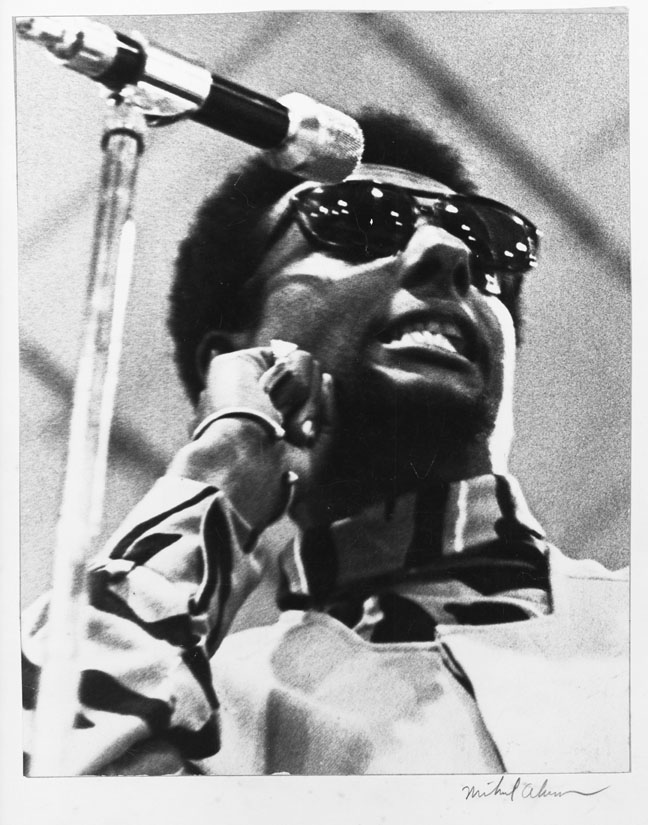 |
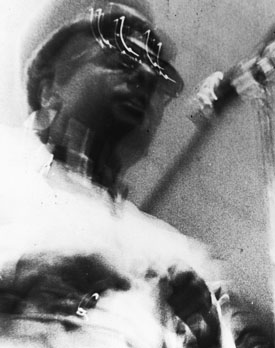 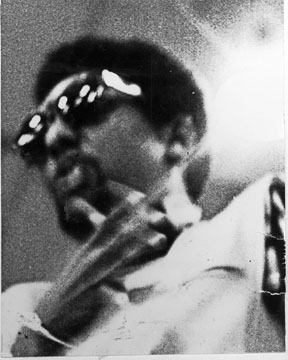 |